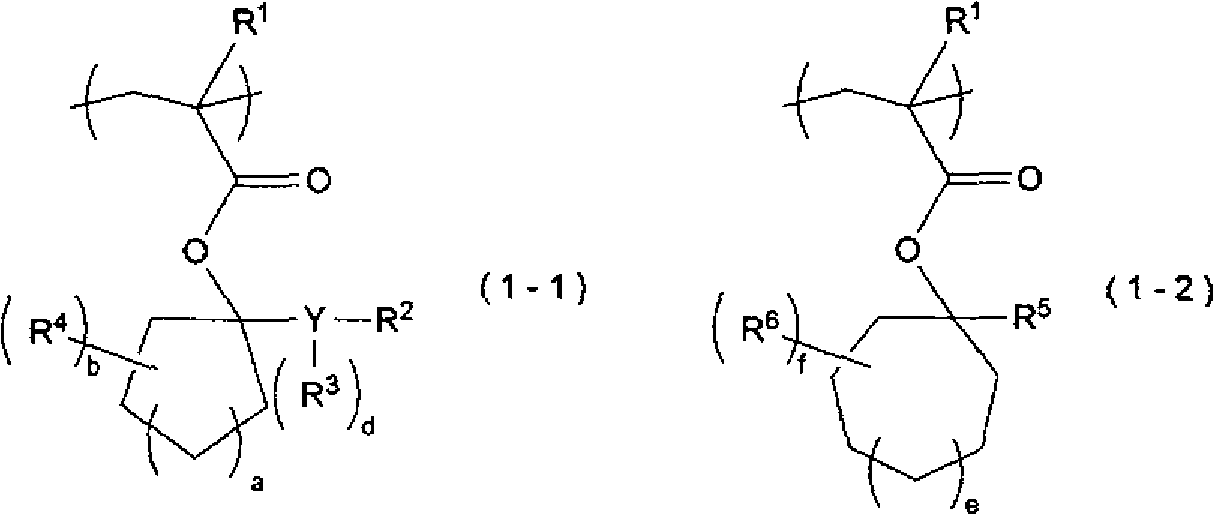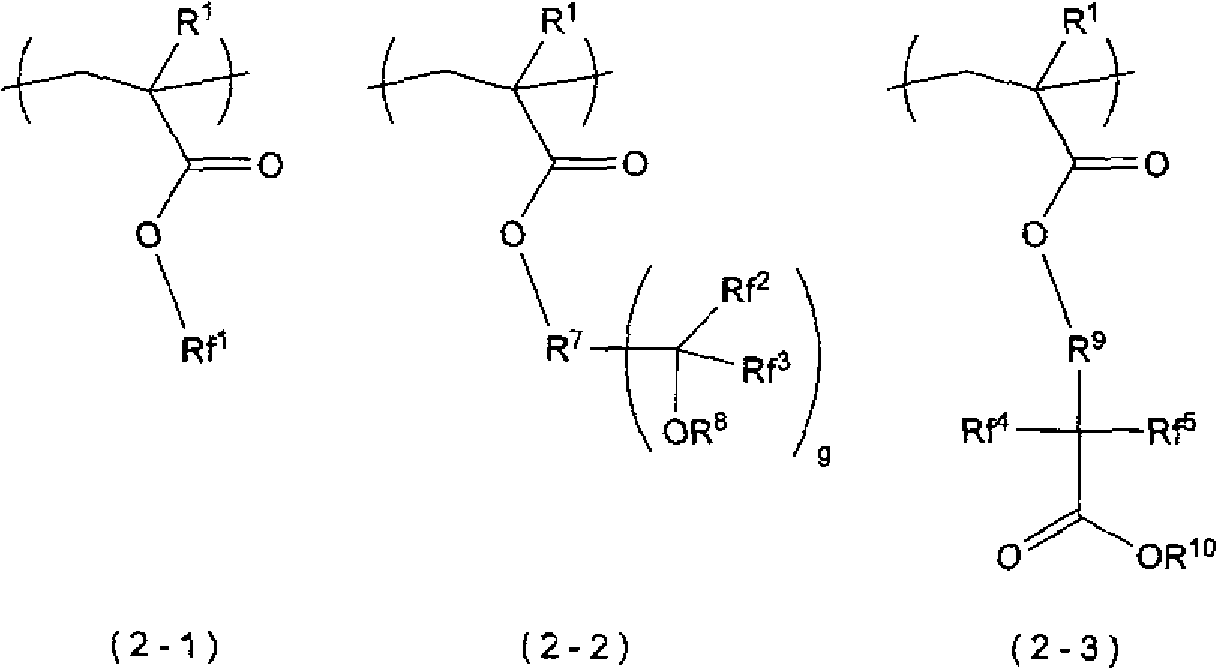Radiation-sensitive resin composition, polymer and resist pattern formation method
一种树脂组合物、敏感性的技术,应用在放射线敏感性树脂组合物领域,能够解决装置昂贵等问题
- Summary
- Abstract
- Description
- Claims
- Application Information
AI Technical Summary
Problems solved by technology
Method used
Image
Examples
preparation example Construction
[0284]
[0285] This radiation-sensitive resin composition can be prepared by mixing, for example, [A] polymer, [B] polymer, [C] acid generator, and optional components as necessary in a predetermined ratio. Generally speaking, when the radiation-sensitive resin composition is used, it is dissolved in a solvent so that the total solid content concentration is 1-50% by mass, preferably 3-25% by mass, and the pore size is 0.02. Filter with a filter of about μm to prepare a composition solution.
[0286] As the solvent used for preparing the composition solution, for example, linear or branched ketones; cyclic ketones; propylene glycol monoalkyl ether acetates; 2-hydroxypropionic acid alkyl esters; 3 -Alkoxy propionic acid alkyl esters;
[0287] N-propanol, isopropanol, n-butanol, tert-butanol, cyclohexanol, ethylene glycol monomethyl ether, ethylene glycol monoethyl ether, ethylene glycol mono-n-propyl ether, ethylene glycol mono-n-butyl ether, two Ethylene glycol dimethyl ether, d...
Embodiment
[0315] Hereinafter, examples are given to further specifically explain the embodiments of the present invention, but the present invention is not restricted by these examples at all. Here, as long as there is no special statement, "parts" is the quality standard. The measurement of physical properties in this example was carried out according to the following method.
[0316] [Weight average molecular weight (Mw) and number average molecular weight (Mn)]
[0317] For the Mw and Mn of [A] polymer and [B] polymer, use GPC columns manufactured by Tosoh Corporation (2 G2000HXL, 1 G3000HXL, 1 G4000HXL) at a flow rate of 1.0 mL / min and use tetrahydrofuran as the elution solvent Measured by gel permeation chromatography (GPC) using monodisperse polystyrene as the standard under analytical conditions at a column temperature of 40°C. In addition, the dispersion degree (Mw / Mn) was calculated from the measurement results of Mw and Mn.
[0318] [ 13 C-NMR analysis]
[0319] For [A] polymer and...
Synthetic example 1
[0325] (Synthesis of polymer (A-1))
[0326] First, prepare 60 mol% of the above-mentioned compound (M-1), 25 mol% of the compound (M-7), 15 mol% of the compound (M-8), and an initiator (2, 2') as monomers. -A monomer solution obtained by dissolving azobisisobutyronitrile (AIBN) in 50 g of 2-butanone. The total amount of charged monomers was 50 g. In addition, the mol% of each monomer means mol% with respect to the total amount of monomers, and the use ratio of the initiator is 5 mol% with respect to the total amount of the monomer and the initiator.
[0327] On the other hand, 50 g of 2-butanone was added to a 500 mL three-necked flask equipped with a thermometer and a dropping funnel, and nitrogen purge was performed for 30 minutes. After that, the inside of the flask was heated to 80°C while being stirred with a magnetic stirrer.
[0328] Next, the monomer solution was dropped into the flask over 3 hours using a dropping funnel. After the dropwise addition, it was aged for 3 h...
PUM
| Property | Measurement | Unit |
|---|---|---|
| aperture size | aaaaa | aaaaa |
| coating thickness | aaaaa | aaaaa |
| coating thickness | aaaaa | aaaaa |
Abstract
Description
Claims
Application Information
 Login to View More
Login to View More - R&D
- Intellectual Property
- Life Sciences
- Materials
- Tech Scout
- Unparalleled Data Quality
- Higher Quality Content
- 60% Fewer Hallucinations
Browse by: Latest US Patents, China's latest patents, Technical Efficacy Thesaurus, Application Domain, Technology Topic, Popular Technical Reports.
© 2025 PatSnap. All rights reserved.Legal|Privacy policy|Modern Slavery Act Transparency Statement|Sitemap|About US| Contact US: help@patsnap.com



